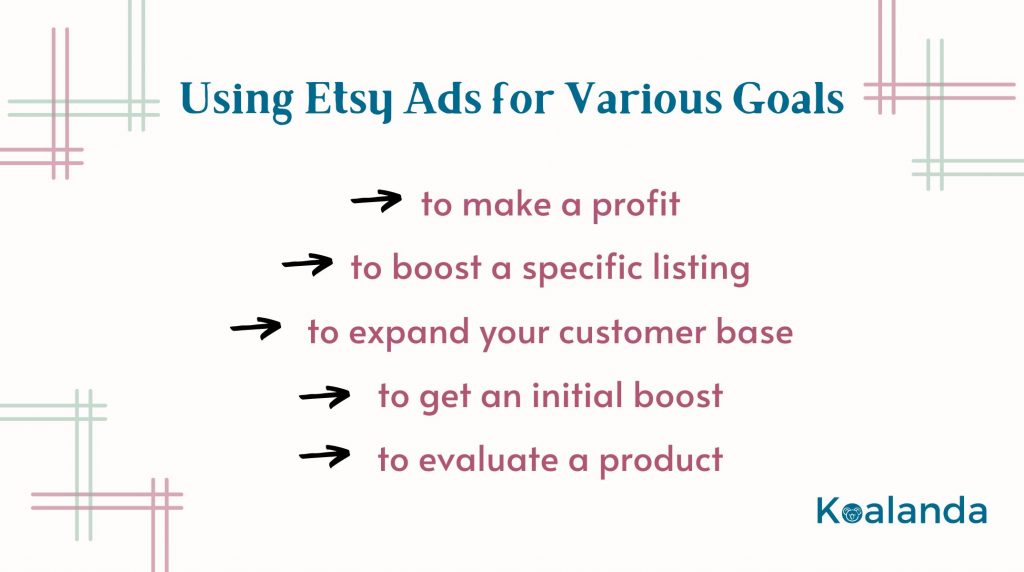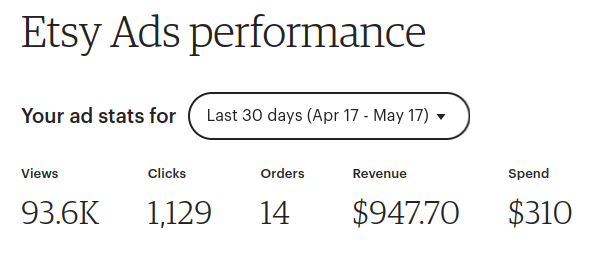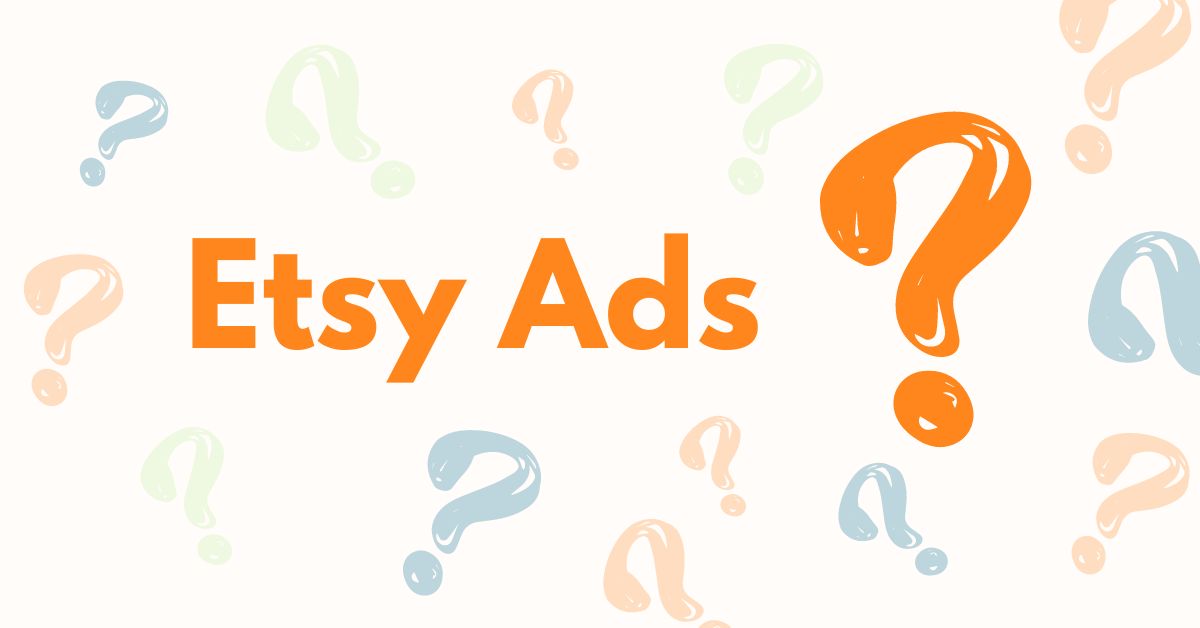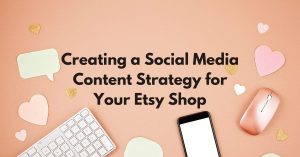Are Etsy Ads worth it? It’s a question that many Etsy sellers have asked themselves. With so many options for advertising, it can be difficult to know which ones are worth investing in. This post aims to help Etsy sellers decide whether or not to experiment with Etsy Ads. While we’ll provide a general overview of how Etsy Ads work, the focus of this article is to guide sellers on whether or not they should try them. Keep in mind that Etsy Ads are just one tool in a larger toolbox of marketing options, and the decision to use them will depend on a variety of factors. So, let’s dive into the world of Etsy Ads and see if they’re right for your business.
Table of Contents
What are Etsy ads?
Etsy Ads are a type of advertising that sellers can use to promote their listings and shops on Etsy. There are two types of Etsy Ads: onsite and offsite ads. Onsite ads are displayed on Etsy’s website and mobile app, while offsite ads are shown on other platforms like Google, Facebook, and Instagram.
Sellers have no control over offsite ads other than whether to enable them or not. In fact, if a shop has made more than $10,000 USD in the last 365 days it can’t even disable the offsite ads. This is why, for the purpose of this article, we will be focusing on onsite ads.
How do Etsy ads work?
Etsy Ads work on a pay-per-click (PPC) model. This means that as an Etsy seller, you only pay when someone clicks on your ad. The cost of a click varies depending on the competition, the ad’s relevance to the search query, and the likelihood of the buyer to make a purchase from you.

The PPC placement model is not that difficult to understand. Imagine that there is a slot for an advertised listing in Etsy’s search results, and that there are 100 relevant listings which compete for this ad slot. The listing that is displayed is determined by a bid amount that Etsy sets for it. This bid amount is based on the expected sales from a click on the ad, which takes into consideration the likelihood of a buyer purchasing the listing and the price of the listing. For instance, if the algorithm predicts that a buyer is highly likely to purchase an expensive item, the bid amount will be higher to ensure that your ad is displayed.
Even though this system may sound strange, it actually benefits everyone. Buyers are happy because they see only relevant listings in their search results, no matter if advertised or not. Sellers are happy because their listings are displayed only to buyers that are interested in them, thus avoiding clicks and costs from buyers that are looking for something completely different. And Etsy is happy because it maximizes the probability of a sale to happen.
How much do Etsy ads cost?
The cost of running Etsy ads can vary significantly based on several factors, including competition for ad space, daily budget, and click volume. The cost per click for the same ad can even fluctuate throughout the day. Our observations show that, on average, most sellers pay between $0.25 and $0.50 per click, though it’s important to note that the cost may vary based on the factors mentioned above.
Before deciding that Etsy ads are too expensive, it’s worth considering a couple of key facts. First, a single click in a poorly targeted Google Ads campaign can easily cost several USD. Second, users who are actively searching on Etsy are likely to have a specific intent to purchase a product, making the cost of Etsy ads relatively low compared to other advertising options.
Using Etsy ads for various goals
Etsy ads can be a powerful tool for sellers when used correctly, yet their purpose is often misunderstood. Most sellers expect the ads to magically start generating revenue for them. This is rarely the case. There are many ways in which sellers can utilize Etsy ads to achieve their business goals. In this section, we will explore the most common ones.

To make a profit
One of the most straightforward reasons to use Etsy ads is to directly make a profit from them. With the right strategy, Etsy ads can help you generate sales and revenue that exceed the cost of the ad campaign, resulting in a positive return on investment (ROI). A successful Etsy ad campaign can drive traffic to your listings, increase visibility and boost your sales, ultimately leading to a higher overall profit. However, while a high ROI is possible, it is rarely achieved.

To boost a specific listing
Another application of Etsy ads is to boost the rating of a specific listing, with the goal of getting quick sales for it and therefore increasing the listing’s rank in the regular searches. After gaining enough momentum, the ads can be turned off for this listing and it should continue selling well on its own. If applied correctly, this approach can even result in the listing becoming an Etsy Bestseller. With this strategy it is obvious that the benefit of Etsy ads is far greater than the revenue during the ads campaign on its own.
To expand your customer base
Investing in Etsy ads can be beneficial for those sellers who have a high percentage of repeat customers. If a significant portion of the sales comes from repeat customers, it is wise to invest in ads to attract new customers even if it results in a temporary loss. The reason behind this is simple: sellers should consider the customer lifetime value (i.e. the total revenue expected from a customer throughout time) instead of simply the revenue from the first order.
To get an initial boost
When starting a new Etsy shop, gaining credibility and visibility in the marketplace can be a challenge. This is where Etsy ads can be particularly useful. Running ads for your new shop and products can help bring in those first few sales, and potentially garner positive reviews to help build credibility. Even if these initial sales don’t result in a profit, the benefits of establishing a reputation and building a customer base can be invaluable in the long term.
To evaluate a product
Etsy ads can also be used as a tool to test the viability of a new product or listing. By running ads for a specific product, sellers can quickly gather data on its performance and use that information to make decisions about how to proceed. For example, if a product doesn’t receive a lot of clicks or sales through the ad campaign, the seller may choose to adjust the listing or scrap it altogether. On the other hand, if the ad campaign is successful, the seller can use that information to guide future marketing and sales strategies.
Drawbacks of Etsy ads
Despite their potential benefits, Etsy ads also have some drawbacks that sellers should consider before investing in them. In this section, we will discuss some of the main drawbacks of Etsy ads.
No flexibility in defining the ad audience
One of the main drawbacks of Etsy ads is the lack of flexibility when it comes to audience targeting. Unlike other ad platforms that allow you to define and segment your target audience by location, gender, or interests, Etsy ads offer no such support. Essentially, your ads will be shown to all users regardless of their location or interests, which may not be ideal for sellers looking to target a specific demographic.
No support of multiple campaigns
While Etsy ads allow you to promote multiple listings or your entire shop, there is no way to organize various campaigns. For instance, if you want to promote two listings with a $5 daily budget each, there is no way to achieve it. Etsy automatically groups all of your listings together, which can make it difficult to control your spending and track the performance of individual listings. This can be a significant drawback for sellers who want to run more targeted and specific campaigns.
Limited ad analytics
One of the biggest drawbacks of Etsy ads is the basic level of analytics it provides. The data provided by Etsy is limited and does not provide any insight into the performance of your ads beyond the basic metrics such as clicks and views. For example, there is no way to break down the ad statistics per country or customer segment. This lack of information makes it difficult to optimize your campaigns for better results.
The good news is that this problem can be partially solved by linking Google Analytics to your Etsy store and analyzing the data from there. However, Google Analytics can only provide insights for the customers that clicked on the ads rather than also the ones that viewed them.
When to invest in Etsy ads
Now that we’ve discussed the fundamental strategies and drawbacks of Etsy ads, we are well equipped to come up with cases in which investing in Etsy ads is worth it or not. Let’s start with the former.
You have a high percentage of repeat customers
If you have a high percentage of repeat customers, investing in Etsy ads can be a wise decision. Repeat customers are likely to purchase again. This means that the cost of acquiring new customers through ads can be offset by the long-term value of those repeat customers.
You can use the Koalanda Order Report to gain important insights about your orders, including the percentage of repeat buyers over a certain period, country statistics, revenue breakdown, and many more.

You have a high conversion rate
If you’ve noticed that a significant percentage of visitors to your shop are making a purchase, it’s a good indication that your shop is well-optimized for sales. Investing in Etsy ads can help you take advantage of your high conversion rate and generate even more sales. With a strong conversion rate, you have a higher likelihood of achieving a positive ROI with your ads.
You want to experiment with new products
As already explained, Etsy ads can be a great way to test new products before you invest more time and money into them. By promoting your new products through ads, you can see how they perform in the marketplace and whether they generate enough interest and sales to justify further investment. This can save you from the potential disappointment of launching a product without testing its viability first.
You want to boost a product
If you have a product that is not getting the desired attention or sales, Etsy ads could help to bring it to the forefront of the marketplace. By increasing the visibility of your product, you may be able to attract new customers to it and therefore increase its rank in regular searches.
When to avoid Etsy ads
Last, let discuss some cases in which using Etsy ads is probably not the best idea.
Your shop is not in a good shape
If you don’t have proper branding, policies, and customer service set up, you will not be able to provide a good shopping experience for your customers. In this case, it’s better to focus on improving your Etsy shop first before investing in Etsy ads. This way, you will be able to take full advantage of the traffic generated by the ads and convert more visitors into customers.
You have a very low conversion rate
If your shop has a low conversion rate, it might be because your products are not competitively priced or your images and descriptions are not appealing enough. Etsy ads are not a solution for these problems. Before investing in ads, you should work on optimizing your listings and improving your product photography and descriptions to make them more attractive to potential customers. Otherwise, you may end up spending money on ads without seeing any return on investment.
Your SEO is not good
Having good SEO is critical to the success of any Etsy shop. If your shop is not optimized for search, then investing in Etsy ads might not be the best use of your money. Etsy will show your ads for irrelevant search terms and this will both decrease the rank of the listings and increase the cost of the clicks. Etsy’s search algorithm is complex, and Etsy ads alone cannot compensate for poor SEO. If your SEO is poor, you may be better off investing in improving your SEO before using Etsy ads.
You expect that the ads will work out of the box
It’s essential to understand that Etsy ads aren’t a magic solution that will instantly solve all of your sales problems. Many sellers think that by just investing money in ads, they can quickly get to the top of Etsy search and make lots of sales. Unfortunately, it doesn’t work that way. Etsy ads should be seen as a part of a more comprehensive marketing strategy, not a one-size-fits-all solution. Making the ads work for you takes some time, experimentation, and patience.
Conclusion
In conclusion, the decision of whether or not to invest in Etsy ads ultimately depends on a variety of factors specific to each seller’s business. While Etsy ads can be a useful tool for achieving specific goals such as boosting a listing or expanding your customer base, they also have drawbacks that should be taken into consideration. Before deciding to invest in Etsy ads, it is important to assess the current state of your shop, including factors such as conversion rate and SEO, and to have a clear understanding of your goals and expected ROI. By carefully weighing the pros and cons and evaluating how Etsy ads fit into your overall marketing strategy, you can make an informed decision about whether or not they are worth it for your business.





